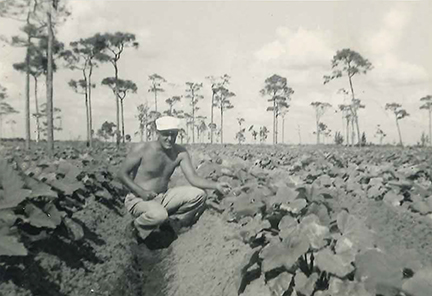Port Canaveral, on the Sunshine State’s eastern coastline, becomes an official port of entry in 1953.
Three years later, in 1955 Winn & Lovett purchases 117 Dixie Home supermarkets in the Carolinas and rebrands as Winn-Dixie.
Florida falls prey to a second Medfly invasion in 1956: larvae are detected in grapefruit at Miami Shores, then found in 28 counties from Seminole to Key West.
Regulators use fumigation tactics with airborne spraying (27 planes in operation daily), applying insecticide to nearly 7 million acres the state. The National Guard sets up roadblocks on major highways to regulate the movement of potentially infested produce out of Florida. Nearly 18 months and $11 million later, the eradication campaign proves successful.


Photograph courtesy of Marie Bedner, Bedner’s Farm Fresh Market.
Tanker ships with Florida orange juice begin sailing from Port Canaveral to New York in 1958. In the years to come, orange juice shipments become the state’s leading export.
To commemorate its 50th anniversary in 1959, the Florida Citrus Exchange changes its name to match one of its trademarked brands and becomes Seald Sweet Growers, Inc.
1960s
Ports & Hurricanes
The Sugar Cane Growers Cooperative of Florida is founded in July 1960 by 54 farmer-members outside of West Palm Beach. The group’s goal is to provide a means to harvest, mill, process, and market sugar and its by products to bring stability to grower operations.
The Port of Miami is designated as an official port of entry for domestic and international trade. A couple months later, in September 1960, Hurricane Donna storms across the Keys before making landfall at Fort Myers.
Four years later in 1964, Hurricane Cleo strikes the Miami metro area, causing $125 million in damage and destroying a quarter of the grapefruit crop in the Indian River citrus producing region.



